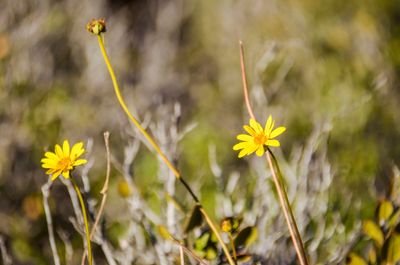Desert Sunflower Info
Hairy desert sunflowers (Geraea canescens) are common across much of the southwestern United States and northern Mexico. This robust wildflower is happiest in sandy or gravelly desert conditions. Also known as desert gold, desert sunflower plants generally bloom in January and February, with sporadic reappearances in October and November. They are among the very first annual wildflowers to bloom in spring. As its name suggests, hairy desert sunflower is a close cousin to the tall garden sunflower that we all know and love. It reaches heights of up to 30 inches (76 cm.). The plant is an important pollinator. Interestingly, it attracts one specific type of bee that depends solely on desert sunflower plants for pollen. The bee leaves the protection of its underground burrow just in time to take advantage of the blooms in early spring.
How to Grow Desert Sunflowers
There really isn’t much to growing desert sunflowers. Just plant seeds and keep the soil moist until they germinate. Late fall is the best time for planting desert sunflowers. Hairy desert sunflowers require full sun and, as mentioned above, they prefer poor, dry, gravelly or sandy soil. Once established, desert sunflower care is minimal, as the plant needs very little water, but does benefit from an occasional watering during the heat of summer. Desert sunflower plants require no fertilizer. Wildflowers often don’t survive in overly rich soil. Like most wildflowers, desert sunflower plants usually reseed themselves if conditions are right.
